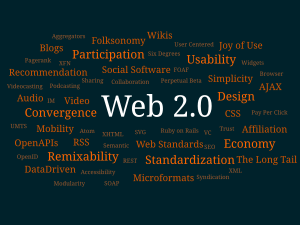It is interesting to see how the internet is now being intertwined with our daily lives. A vast difference from the yesteryear, from my old mobile phone, we now have the Android phones or the iPhone to surf the web, make purchases, view YouTube on the go. It is exciting to see what the future of the internet contains. So how did it all start?
Web 1.0 is a platform of information that is read only. It was static and non-interactive web pages that at most allow for an interchange of documents. In 1996 for were 45 million global users. The focus of Web 1.0 was on companies and owning content. You basically could not do anything else but browse like a book.
Web 1.0 was used for Geocities, Hotmail, home pages, Netscape, Britannica Online...
With the evolution of the internet, some people define Web 2.0 as a platform for participation, a focus on communities, sharing content or user-generated content, and an interchange of data. The focus of Web 2.0 was on web applications. People recommending each other videos, sites, pages drove the success of Web 2.0. Over 1 billion people were using Web 2.0 in 2006.
With the dynamism and constant evolution of the internet, people predict we are entering Web 3.0. Where computers are able to make sense of data (semantic web), virutal worlds can be incorporated and used for information services and libararies. Of course, the increased power of broadband and streaming capabilities. It is scary to think that computers will be able to run on their own without the use of human input; able to give meaning to things and form their own solutions. However, the potential is limitless. The use for it to find solutions is tremendous. The computer will be able to generate for you solutions for medical illness.

Nevertheless, it is still exciting to be living in the time where we can see it all happening.


No comments:
Post a Comment